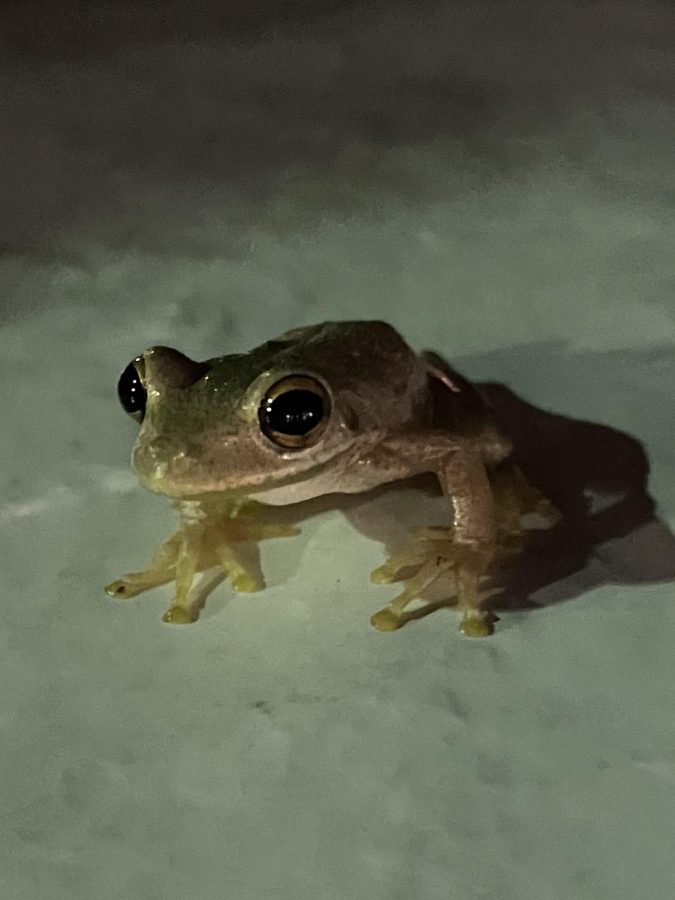Invasive Animals of New Jersey
This article is part of the Wild New Jersey Nature Column! New Jersey has a lot of unique wildlife, but how much of it is ours? Read on to find out!
October 25, 2022
Throughout the years of increased trade around the world, sometimes animals hitch a ride and are accidentally brought into a different country. This country can match their climate at home, making it easy for the introduced animal to thrive and form a population that only gets larger with the lack of predators they would see at their native home. As a result, there are invasive animals in New Jersey that are native not to NJ, but to places all around the world. Generally, the larger the established population, the more dangerous to the environment the species is considered. If you find an invasive species it is encouraged you report it or remove it from the environment. The following is a list of some non-native animals that can be found in NJ:
Cuban Tree Frog:
Native to Cuba but accidentally introduced to NJ in the 1920s through hitchhiking on shipping containers overseas. They have become a large issue in Florida since they favor tropical climates, but still can be found in NJ. The Cuban Tree Frog’s diet includes anything it can fit in its mouth, from bugs to smaller native frogs. The Cuban Tree frog can get 4-6 inches long, with large bulging eyes, thin structure, large toe pads, and typically light gray or tan skin. As juveniles, they have blue bones that can be seen through the clear skin of their inner thigh.

Giant Leopard Slug:
A massive slug native to Europe, but spread to most of the world, this slug can reach 6-8 inches in length! The Giant Leopard Slug eats living and dead plants, fungus, carcasses, flowers, and fruit and vegetables. This slug commonly displaces the native Banana Slug, a large bright yellow slug.
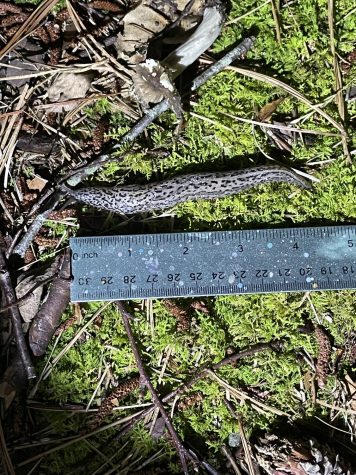
Multicolored Asian Lady Beetle:
There are native ladybugs in NJ and North America, however their populations are dropping as the Asian Lady Beetle is taking all their resources. The Asian Ladybeetle is native to China, but was introduced to the US on purpose by the Department of Agriculture to lower the population of aphids, an agricultural pest. The invasive beetle has since spread and is threatening local Ladybug populations. Asian Lady Beetles can be identified by their black and white ‘M’ shape on their head and anywhere from 1-22 spots on their back. A native species of NJ Ladybug is the endangered Nine-Spotted Ladybug, identifiable by 9 symmetrical spots on its back.
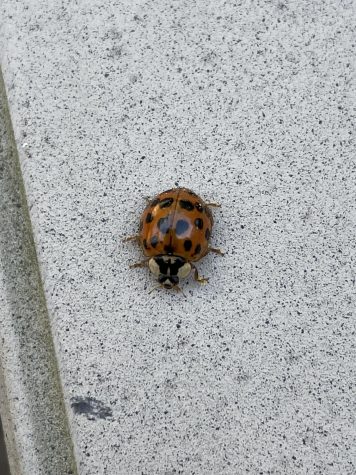
Spotted Lanternfly:
See past article: New Jersey’s Invasive Spotted Lanternflies: What are They?
The Spotted Lanternfly is native to China but was accidentally introduced to the US around 2014. Since then, it has become an agricultural pest, weakening or killing the trees it infests by sucking their sap out. This insect affects most NJ tree species, along with agriculturally important trees. It is encouraged that you “stomp out the lanternfly” as per the Department of Agriculture.

Zebra Mussel:
The Zebra mussel is native to Eurasia, but was introduced here in the 1980s via ballast water from European ships in the Great Lakes Area. Ballast water is water discharged from ships when the ship is not carrying cargo, stabilizing the ship. Zebra Mussels are freshwater shells, spreading and eating up resources native mussels need. Zebra Mussels are even clogging up power plant intakes, causing millions of dollars of maintenance to remove them. They can be identified by their pale and dark alternating zig-zag lines and their fingernail-2 inch size. It is recommended that if you see a Zebra Mussel, you soak it in alcohol and report it. Rinsing your boat before and after entering freshwater waterways can help curb their spread.

Snakehead Fish:
Native to China, Russia, and the Koreas, this freshwater fish made its first appearance in an American lake in 2008. Since then, they have been spreading to other freshwater lakes, streams, tributaries, rivers, canals, etc. They prefer muddy swamp like-bodies of water. The Snakehead fish eats anything that fits in its mouth, from reptiles, frogs, other fish, and even birds as adults. The Snakehead Fish can reach up to 3 feet in length, and can be identified by its long body, pointed head, muddy colors, and long top (dorsal) and bottom (anal) fins.
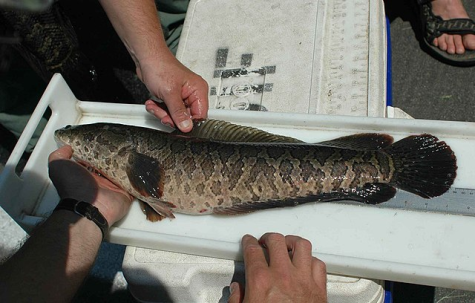
Red-Eared Slider Turtle:
One of the most invasive animals in the world, the only place this animal is supposed to be found is the lower Mississippi Valley area, near the Gulf of Mexico. Due to the pet trade and people releasing this turtle where it is not native, it has since spread to most of the US outside its native range, and to every continent except Antarctica. This turtle outcompetes native species of turtles for resources, making it on the list as one of the ‘top 100 worst invasive species in the world,’ according to the California Department of Fish and Wildlife. This turtle can be found in freshwater ponds, swamps, streams, etc. Identifiable markings include red stripes behind the ears, olive green shells, and yellow or orange plastrons (belly shells).
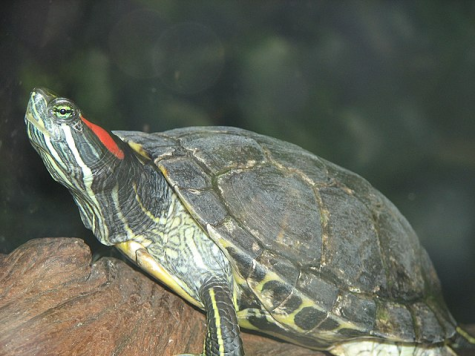
Sources:
Hearts Pest Management: https://www.heartspm.com/asian-lady-beetles-vs-native-ladybugs.php
NJ Department of Environmental Protection: https://dep.nj.gov/njfw/fishing/freshwater/aquatic-invasive-species/
UNiversity of Florida: https://ufwildlife.ifas.ufl.edu/frogs/cubantreefrog.shtml
iNaturalist: https://www.inaturalist.org/taxa/62470-Limax-maximus
Texas INvasive Species: http://www.tsusinvasives.org/home/database/limax-maximus
National INvasive Species Information Center:
https://www.invasivespeciesinfo.gov/subject/ballast-water
USGS: https://www.usgs.gov/faqs/what-are-zebra-mussels-and-why-should-we-care-about-them
Wisconsin Department of Natural Resources: https://dnr.wisconsin.gov/topic/Fishing/species/snakehead.html
Doi.gov: https://www.doi.gov/employees/snakeheads-horror-story
Invasive Species Center: https://www.invasivespeciescentre.ca/invasive-species/meet-the-species/land-and-animal-invertebrates/red-eared-slider/
On the Water: https://www.onthewater.com/new-jerseys-invasive-species-northern-snakeheads-flathead-catfish
California Department of Fish and Wildlife: https://wildlife.ca.gov/Conservation/Invasives/Species/Redeared-Slider
NJ Fish and Wildlife




























